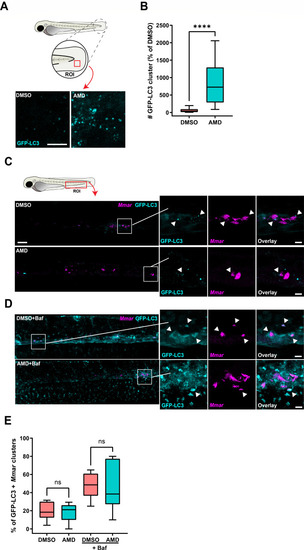- Title
-
Host-directed therapy with amiodarone in preclinical models restricts mycobacterial infection and enhances autophagy
- Authors
- Kilinç, G., Boland, R., Heemskerk, M.T., Spaink, H.P., Haks, M.C., van der Vaart, M., Ottenhoff, T.H.M., Meijer, A.H., Saris, A.
- Source
- Full text @ Microbiol Spectr
|
Identification of amiodarone as host-directed therapeutic for mycobacterial infections in primary human macrophages. ( |
|
Amiodarone controls |
|
Amiodarone restricts |
|
Amiodarone induces an increase in (auto)phagosomes, without affecting autophagic targeting of |




